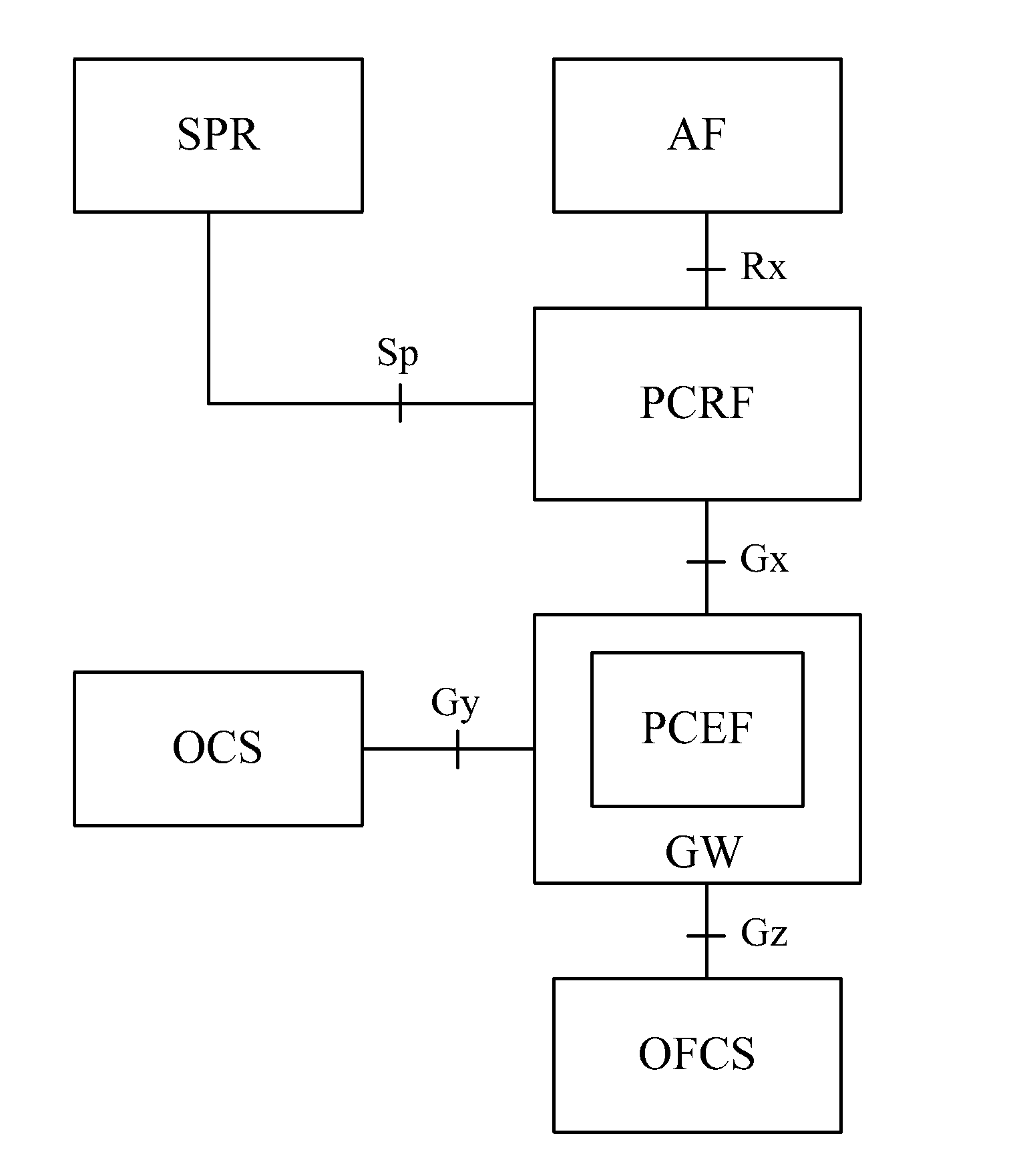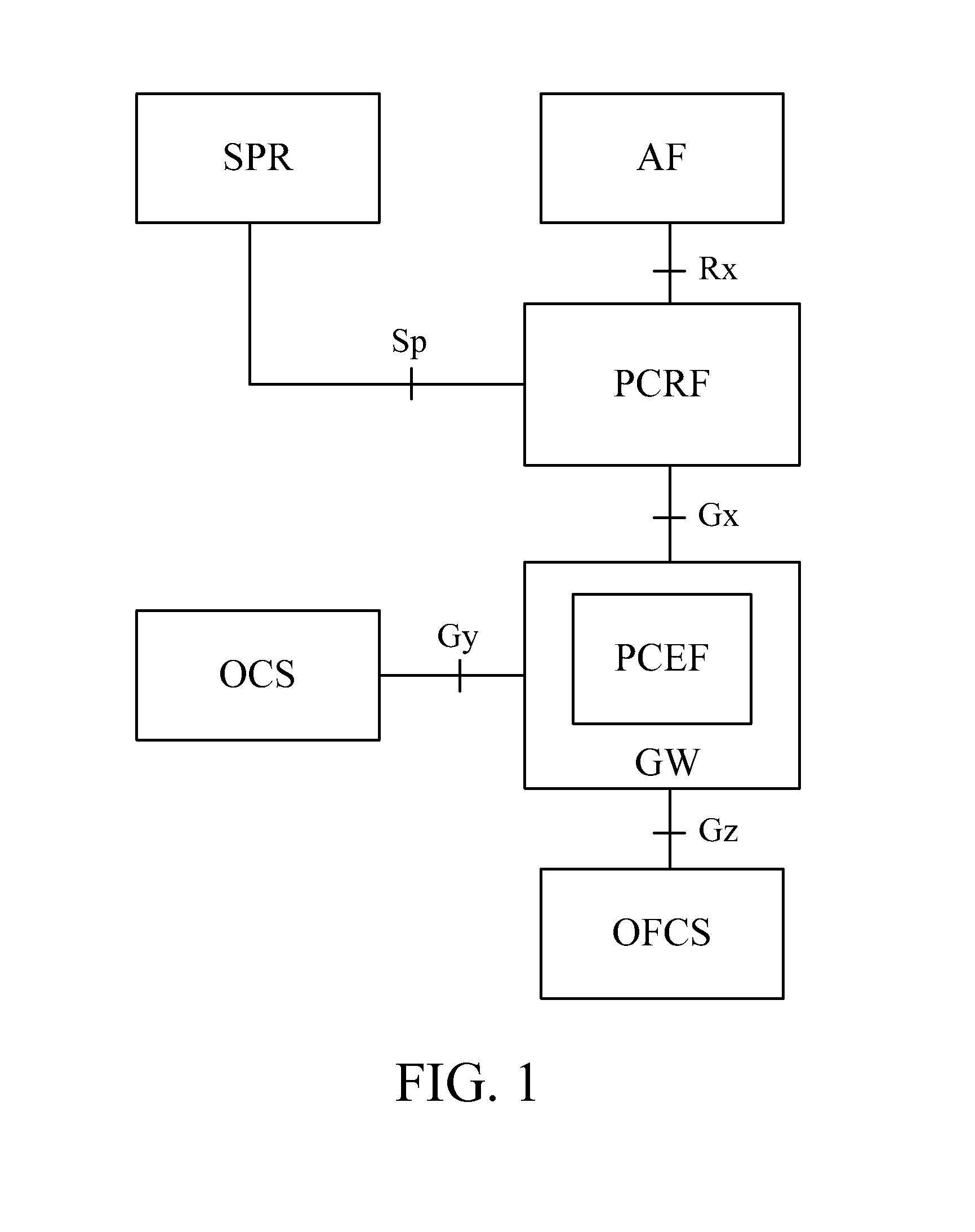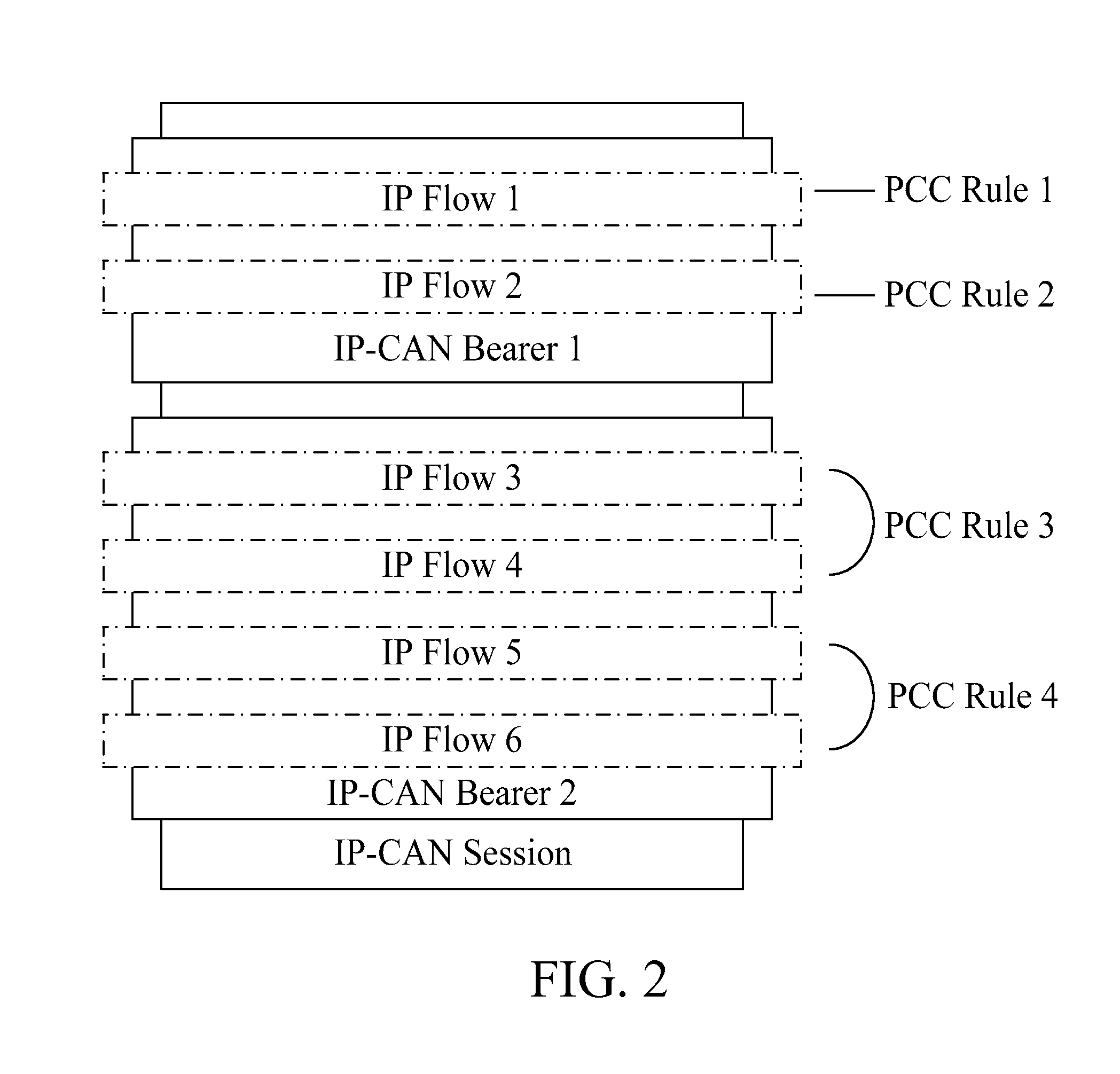Method, system and entity of realizing event detection
- Summary
- Abstract
- Description
- Claims
- Application Information
AI Technical Summary
Benefits of technology
Problems solved by technology
Method used
Image
Examples
first embodiment
[0055]FIG. 4 is a flow chart of event detection according to the present invention. As shown in FIG. 4, in this embodiment, a method of realizing event detection in the case that a PCEF / GW requests a PCC rule is provided, which includes the following steps.
[0056]In Step 400, the PCEF / GW sends a CCR message to a PCRF to request a PCC rule.
[0057]In Step 401, the PCRF returns a CCA message to the PCEF / GW.
[0058]The CCA message carries PCC rules and an Event-Trigger parameter bound to a designated PCC rule.
[0059]The PCC rules carried in the CCA message have a large range, for example, PCC rule 1, PCC rule 2, and PCC rule 3 may be carried as shown in FIG. 2, and the PCEF / GW executes the PCC rules on designated IP-CAN bearers according to the PCC rules. The designated PCC rule bound to the Event-Trigger parameter carried in the CCA message has a small range, for example, the event detection is designated only for PCC rule 1. As seen from this step, the event detection requested by the PCEF...
second embodiment
[0064]FIG. 5 is a flow chart of event detection according to the present invention. As shown in FIG. 5, in this embodiment, another method of realizing event detection in the case that a PCEF / GW requests a PCC rule is provided, in which a PCRF performs binding of an IP-CAN bearer to a PCC rule. The method includes the following steps.
[0065]In Step 500, the PCEF / GW sends a CCR message to the PCRF to request a PCC rule.
[0066]In Step 501, the PCRF returns a CCA message to the PCEF / GW.
[0067]The CCA message carries PCC rules and an Event-Trigger parameter that is bound to a designated PCC rule and meanwhile bound to an IP-CAN bearer ID bound to the PCC rule.
[0068]As seen from this step, the event detection requested by the PCEF / GW is directed to the designated IP-CAN bearer.
[0069]In Step 502, the PCEF / GW detects a status of an IP-CAN bearer corresponding to the designated IP-CAN bearer ID according to the instruction from the PCRF.
[0070]In Step 503, upon detecting a certain event, the PC...
third embodiment
[0074]FIG. 6 is a flow chart of event detection according to the present invention. As shown in FIG. 6, in this embodiment, a method of realizing event detection in the case that a PCRF actively delivers a PCC rule is provided, which includes the following steps.
[0075]In Step 600, the PCRF actively delivers PCC rules to a PCEF / GW through an RAR message and carries an Event-Trigger parameter bound to a designated PCC rule.
[0076]As seen from this step, the event detection actively delivered by the PCRF is directed to the designated PCC rule.
[0077]In Step 601, the PCEF / GW returns a re-authorization answer (RAA) message corresponding to the RAR message to the PCRF.
[0078]In Step 602, the PCEF / GW detects a status of an IP-CAN bearer corresponding to the designated PCC rule according to the instruction from the PCRF.
[0079]In Step 603, upon detecting a certain event, the PCEF / GW reports the Event-Trigger parameter of the detected event and the PCC rule associated with the detected event to ...
PUM
 Login to View More
Login to View More Abstract
Description
Claims
Application Information
 Login to View More
Login to View More - R&D
- Intellectual Property
- Life Sciences
- Materials
- Tech Scout
- Unparalleled Data Quality
- Higher Quality Content
- 60% Fewer Hallucinations
Browse by: Latest US Patents, China's latest patents, Technical Efficacy Thesaurus, Application Domain, Technology Topic, Popular Technical Reports.
© 2025 PatSnap. All rights reserved.Legal|Privacy policy|Modern Slavery Act Transparency Statement|Sitemap|About US| Contact US: help@patsnap.com



